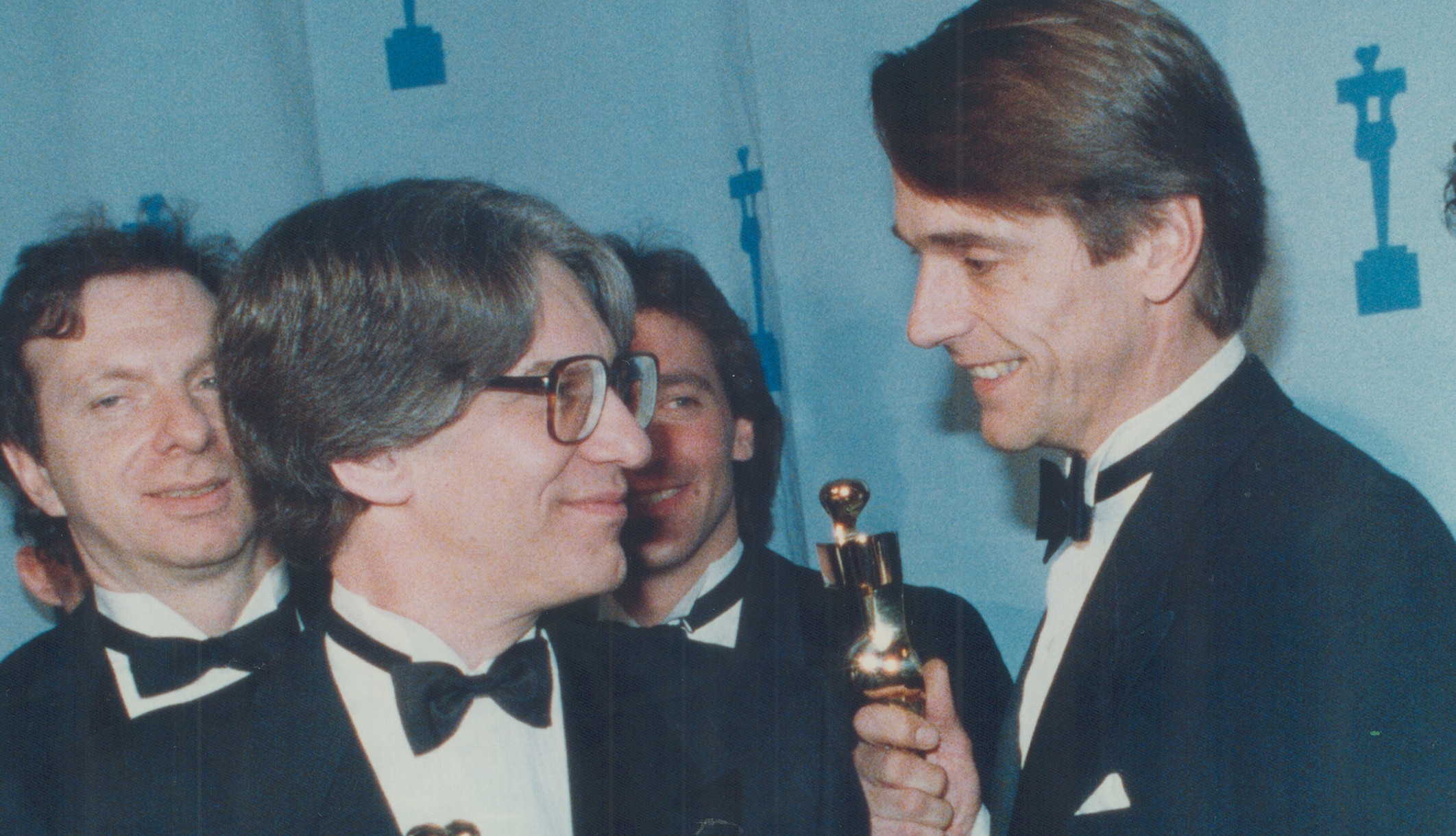Create a free profile to get unlimited access to exclusive videos, breaking news, sweepstakes, and more!
The True Crime Story Behind David Cronenberg's Horror Masterpiece 'Dead Ringers'
David Cronenberg's grotesque masterpiece "Dead Ringers" has horrified audiences for two decades. How much was inspired by the story of Stewart and Cyril Marcus?

Esteemed filmmaker David Cronenberg's oeuvre is characterized by grotesque visuals and even more grotesque characters. Focusing on the horror of the human body and the intersections of psychology and technology, these artsy films have become cult classics amidst genre enthusiasts. Although often veering into fantasy and surrealism, one of Cronenberg's most nauseating films, "Dead Ringers," is actually based on a true story.
"Dead Ringers" tells the tale of the impossibly good-looking identical twins Elliot and Beverly Mantle (both played by Jeremy Irons). The beautiful yet nefarious duo, who both work as gynecologists, have a penchant for trading places while seducing women. Their lives spiral out of control due to both decadence and extensive drug usage. The movie traces the pair's descent into madness: as each twin's sense of self dissipates, they begin a psychotic experiment to create ghastly medical tools "for operating on mutant women."
The gruesome film concludes (spoilers ahead!) in a bloody double suicide, with Beverly consensually disemboweling Elliot, fleeing, and returning shortly thereafter to die in his brother's arms.
Cronenberg's film is based on the novel "Twins" by Bari Wood, which in turn is based on the real life story of Stewart and Cyril Marcus, an actual pair of identical twin gynecologists who perished together in July 1975.
The Marcus brothers both worked on the staff of New York Hospital and Cornell University Medical College. The two had edited a textbook on obstetrics and gynecology and co-wrote several articles about infertility. The strange circumstances of their death were covered by Ron Rosenbaum in his collection of essays, "The Secret Parts Of Fortune."
On July 17, 1975 the brothers were both found dead by a handyman in their Manhattan apartment, both from what at first appeared to be barbiturate withdrawal. Later toxicology reports on the subject omitted this detail, as it was perhaps made in error.
It's unclear when or how exactly the brothers passed away: Rosenbaum's essay states that it was likely Stewart died between July 10 and July 14 of a drug overdose; Cyril died of unspecified causes between July 14 and July 17.
A Time Out New York article covering the deaths at the time noted that the brothers "shared nearly everything: a thriving practice, teaching appointments at New York Hospital, a house in the Hamptons and a debilitating barbiturate addiction."
“We cannot tell if they had wanted to stop, or simply had no strength to go get some more drugs,” the medical examiner’s office said to Time Out New York of their demise.
The pair's death shocked the medical community at the time and prompted the creation of warnings about reporting doctors who may be working under the influence, according to The New York Times, which also noted that the two had performed several operations while under the influence of drugs. As in the film: prior to their deaths, coworkers had previously observed the twins' incredible connection with each other and described the two as geniuses, if not "a bit peculiar."
Questions about the sexualities of the doctors remain. In Cronenberg's film, the two men are depicted deceiving women by posing as each other, a plot apparently invented entirely for the film. A New York Times article discussing the large differences between the book and the film notes that one of the largest liberties taken by Cronenberg with the source material is that one of the brothers in "Twins" was a homosexual. In real life, Cyril was divorced and had two daughters. Stewart was never married.
Despite the iconic imagery, Cronenberg's "mutant women" sub-plot appears to be entirely fictional. Cronenberg's vague commentary about how he came to choose the story of The Marcus Brothers as the subject of his film offers little insight into what inspired him about their tragic tale.
“When was the last time a gynecologist was in a movie, even as a figure of fun?" he told Criterion Collection in 1998. There’s something taboo there; something strange and difficult ... 'Dead Ringers' is conceptual science fiction, the concept being: ‘What if there could be identical twins?’ I’m suggesting that’s impossible. I can imagine a world in which they are only a concept, like mermaids.”
Cronenberg's take on the Marcus brothers’ story was met with mixed reviews at the time of its debut in 1988, but has since received a critical re-evaluation marking it as an under-appreciated yet completely nightmarish classic.
"Watching it is like slowing down to look at a traffic accident, afraid you might see something," wrote Washington Post critic Rita Kempley shorty after the film's release. "It's really sordid stuff that becomes ridiculous, painful, unbelievable and tedious when the Mantles hit bottom, sharing needles and putting their faces in sponge cake in their squalid offices."
While the tortured psychologies of the Marcus brothers may never be truly known, "Dead Ringers" provides at least one hideous fantasy about what may have led to their deaths.
[Photo: David Cronenberg, left and Jeremy Irons, right, after winning Genie Awards for "Dead Ringers." Credit: Getty Images]


